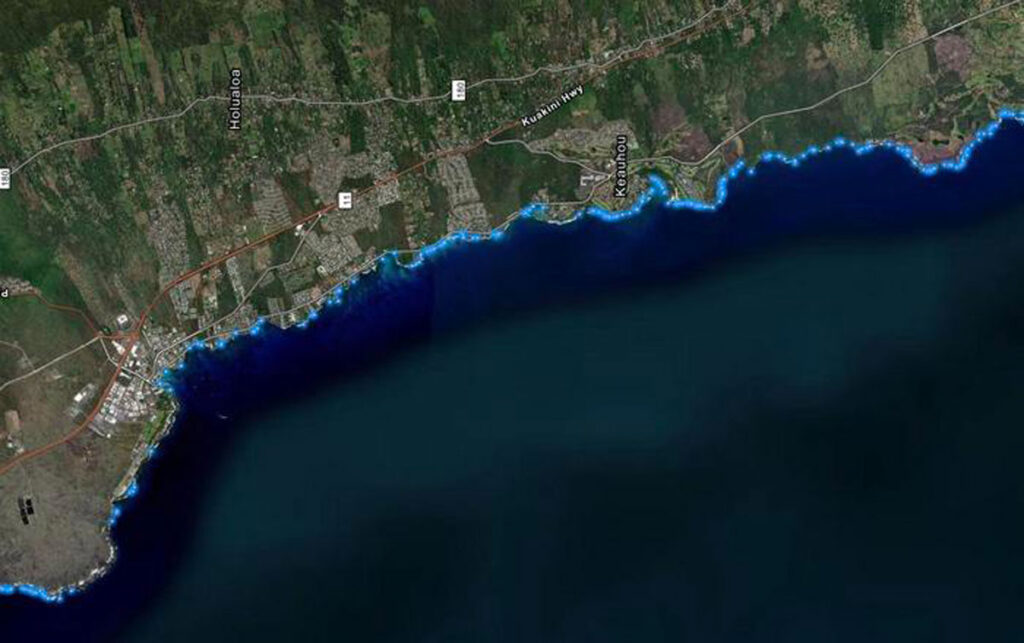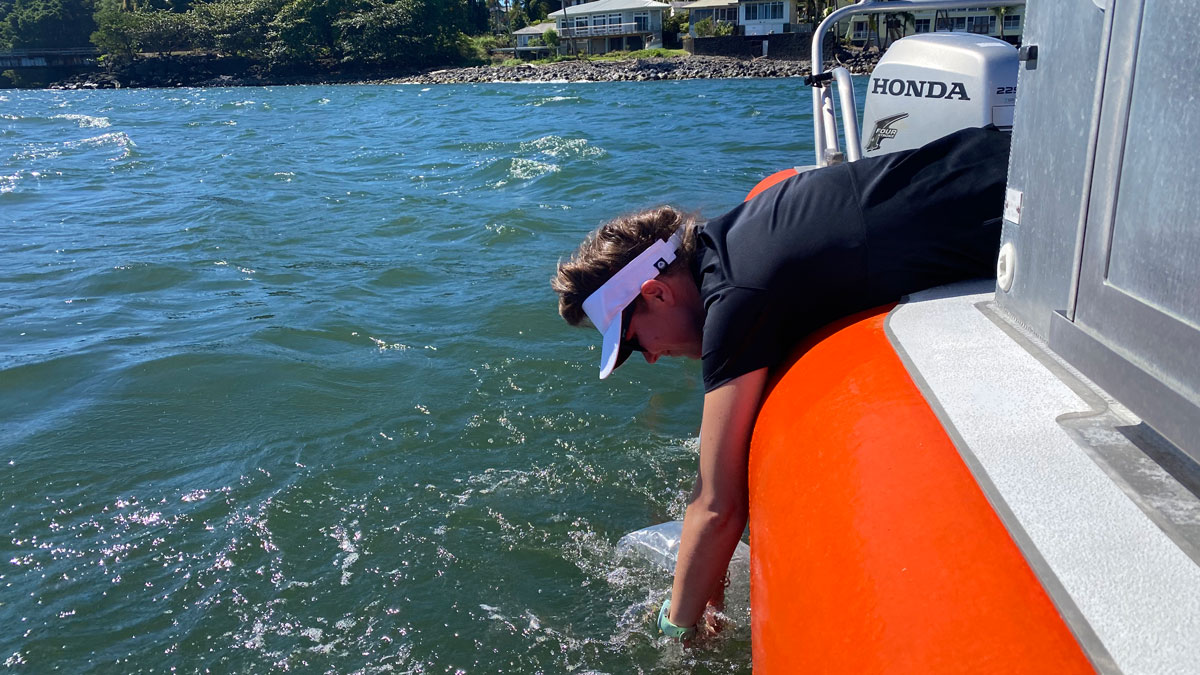In Hawaii, most of the population relies on private septic tanks or cesspools to dispose of sewage and other wastewater. There are more than 88,000 cesspools in the state, with about 55,000 on the Big Island alone. These systems, as opposed to more strictly regulated municipal wastewater treatment units, have a higher risk of sewage leaking into the porous substrate.
A recent study published in Frontiers in Marine Science identifies sewage-contaminated submarine groundwater discharge (SGD) sites, pinpointing specific locations that stakeholders may want to prioritize for mitigation efforts.
Modeling and Mapping
Previous studies estimated that groundwater flows deliver 3 to 4 times more discharge to oceans than rivers do, making them significant pathways for transporting pollutants.
In response to pollution concerns from the local community, a team from Arizona State University, with the support of the Hawaiʻi Marine Education and Research Center, used airborne mapping to identify locations where SGD reached the ocean along the western coastline of the Big Island.

To precisely identify these freshwater-seawater interfaces, researchers built on previous studies that used thermal sensors to capture the temperature difference between the two bodies of water. Figuring out which of these discrete interface points were problematic “was very challenging,” said Kelly Hondula, a researcher at the Center for Global Discovery and Conservation Science and first author of the study.
The team identified more than 1,000 discharge points and collected samples from 47 locations. “We chose points where we could localize freshwater emerging from the land or points of high community interest,” explained Hondula.
In addition to aerial surveys, researchers analyzed the discharge points by monitoring their salinity gradients and measuring levels of Enterococcus, a group of bacteria that frequently serve as key fecal indicators in public health testing. They integrated these data into a statistical model that used upstream land cover and known sewage sites to predict the likelihood of sewage and bacterial contamination for each SGD site along the western Hawaiʻi coastline.
The techniques allowed scientists to identify regions of the built environment that are associated with contamination. Besides areas with septic systems and cesspools, they found a high correlation between sewage discharge and development within the first 500 meters of the coast.
“Sewage going into the ground comes out in the ocean, with often a worrying level of waste contamination.”
The geology of a discharge point also contributes to its risk of contamination. Discharge points around the island’s South Kona region, for instance, feature “some of the youngest and most porous volcanic substrate in the archipelago, with little soil development and a high degree of hydrologic connectivity between point sources of pollution and coastal waters,” the authors wrote. Although South Kona has relatively sparse development, increased land use will likely have a disproportionate effect on groundwater quality, they concluded.
“We were surprised to find such clear results: Sewage going into the ground comes out in the ocean, with often a worrying level of waste contamination,” said Hondula.
Mapping Mitigation
As communities continue to invest in coastal development, understanding the effect of sewage discharge and how to avoid it is becoming an increasingly pressing concern worldwide.
As such, the new study “contributes to the growing body of evidence correlating sewage-tainted groundwater discharge with coastal water quality, showing a strong linkage between wastewater and development in the nearshore area. That’s something that land managers and conservation scientists should really take into account,” said Henrietta Dulai, a geochemist at the University of Hawaiʻi at Mānoa who was not involved in the study.
The state of Hawaii has recognized the particular risk posed by largely unregulated cesspools leaking sewage-contaminated groundwater to the ocean. In fact, there is a state mandate to eliminate cesspools by 2050, but the associated cost is slowing the process.
Many scientists say the costs of phasing out cesspools is far outweighed by the health benefits. “We need to consider the financial sides of replacing cesspools versus the benefit of preserving the water quality for the environment and the people,” said Tristan McKenzie, a researcher at the University of Gothenburg, Sweden, who was not involved in the study. “Studies like this highlight why we need to act now.”
—Anna Napolitano (@anna83nap; @anna83nap.bsky.social), Science Writer

